Active region NOAA 1654 appeared on 8 January at the northeast solar limb and quickly became the dominant sunspot group on the visible solar surface. On 11 January, its sunspot area equaled about 7 times the area of the Earth, and by 13 January its length was almost 19 Earth diameters. The leading spot was complex and changed its shape impressively, as can be seen in this movie covering the period from 10 January (noon) till 12 January (noon).
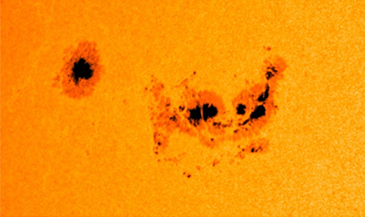
One would expect quite some strong flaring activity from such a dynamic and ominously looking sunspot group, but this was not the case. NOAA 1654 produced mainly small C-flares (more than 20 on 10 and 11 January), and only 2 M-class (medium) flares. The reason for this is that the big sunspots in the main part of the group are actually all of the same magnetic polarity, as can be seen in this colored SDO-magnetogram. Red is negative (returning, "black") polarity, while the blue colors indicate positive (outcoming, "white") polarity. This situation prevents important magnetic reconnection.
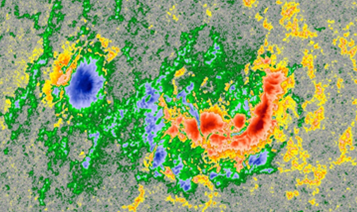
Hence, the strongest flaring took place on the south side of the sunspot group, near the rather tiny blue spots to the lower left "southeast" and lower right ("southwest") of the big main spot - which was of opposite polarity. This guaranteed magnetic reconnections, but thus only small to medium flares. The picture underneath shows some mass ejection to the southeast of the main spot, following the C8-flare on 10 January (around 17:45UT).
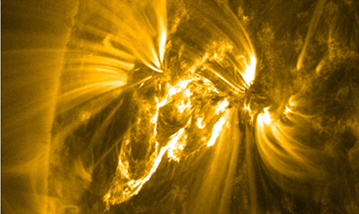
The C9-flare during the early morning hours of 11 January, as well as the second M-flare in the afternoon, both took place in the same area. However, the first M-flare occurred to the southwest of the main spot, reaching its maximum x-ray intensity (M1.2) at 09:11UT. It ejected also plasma to the southwest, and created a small temporary coronal hole. This can be seen as an EUV-dimming (slightly darkish area) to the west of the imaginary line between NOAA 1654 and NOAA 1657. See the SDO/AIA 211 image underneath.
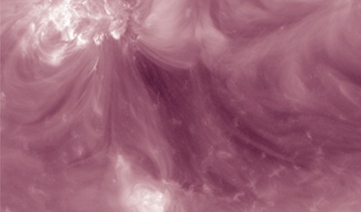
The eruption also created a radio burst which was nicely captured by the Radio Observatory in Humain. Radio-disturbances can be seen between 09:00 and 09:30UT, with signatures of electron beams (type III bursts) and a signature of a shock wave (type II burst). Despite the occasional mass ejections, none of the 10-11 January flares from this active region produced an obvious coronal mass ejection in the coronagraphs of SOHO or STEREO.
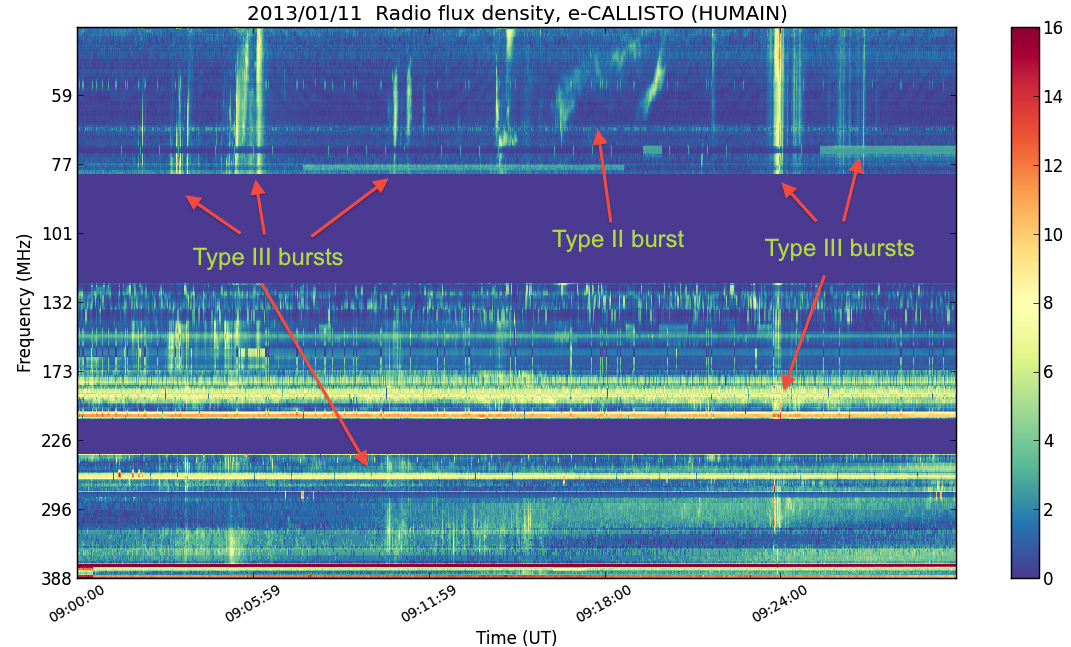
NOAA 1654 also interacted with other active regions such as NOAA 1652, a sunspot group to the northwest, and with NOAA 1657 on the southern solar hemisphere. This can be seen in the image underneath (SDO/AIA 171 on 11 January at 14:59UT), showing the ongoing M1-eruption (southeast of the main spot) as well as the coronal loops connecting NOAA 1654's main spot with the opposite polarity regions in the trailing part of NOAA 1652 and the leading part of NOAA 1657.
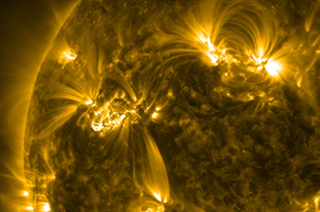
 |
 |





